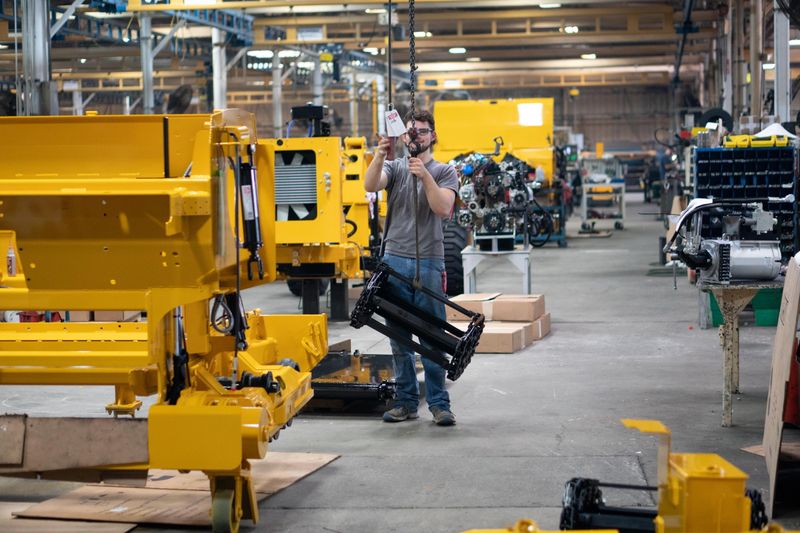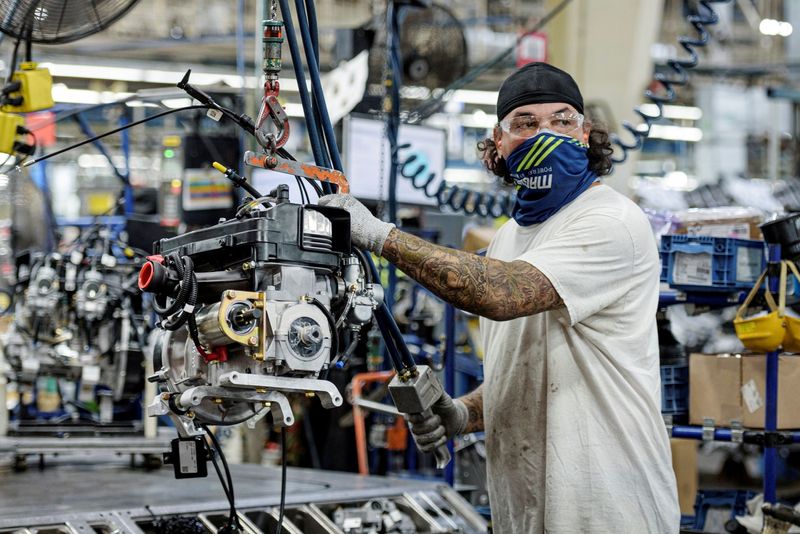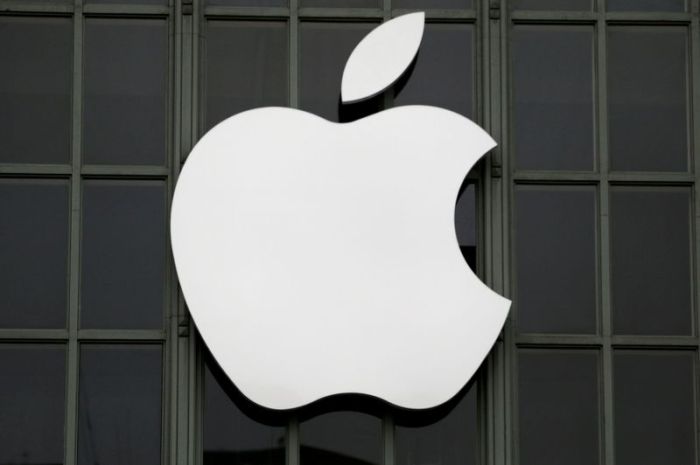WASHINGTON (Reuters) – U.S. consumer confidence inched up to a 17-month high in July, with households’ spending plans rising even as concerns about higher inflation lingered, suggesting the economy maintained its strong growth clip early in the third quarter.
The economy’s prospects were further brightened by other data on Tuesday showing a solid increase in new orders for manufactured capital goods in June despite supply constraints hampering production at some factories, indicating that business spending on equipment could remain strong for a while.
The reports could ease worries about a sharp slowdown in growth in the second half of the year as the boost from massive fiscal stimulus fades. The economy is believed to have notched its second-fastest growth pace since 1983 in the second quarter.
“Higher confidence suggests that consumer spending should support robust growth in the second half of this year,” said Priscilla Thiagamoorthy, an economist at BMO Capital Markets in Toronto.
The Conference Board said its consumer confidence index ticked up to a reading of 129.1 this month, the highest level since February 2020, from 128.9 in June. Economists polled by Reuters had forecast the index would fall to 123.9.
Consumers’ inflation expectations over the next 12 months dipped to 6.6% from 6.7% last month. The Conference Board survey places more emphasis on the labor market. The University of Michigan’s survey of consumers showed sentiment falling in early July because of inflation concerns.
Consumer confidence held up despite the Delta variant of the coronavirus driving a surge in new infections mostly among the unvaccinated. Confidence fell in the West South Central and West North Central states, as well as the Mountain region, which have low vaccination rates and are experiencing a surge in infections.
“The Delta variant does pose some downside risk, although we do not expect it to derail confidence entirely, given that its spread is uneven and largely concentrated in areas with low vaccination rates,” said Pooja Sriram, an economist at Barclays in New York.
The survey’s so-called labor market differential, derived from data on respondents’ views on whether jobs are plentiful or hard to get, nudged up to 44.4 in July. That was the highest level since 2000 and up from 44.2 in June. This measure closely correlates to the unemployment rate in the Labor Department’s closely watched employment report.
More households intended to buy long-lasting manufactured goods such as motor vehicles and household appliances such as refrigerators and television sets, which should help to underpin consumer spending and manufacturing, the survey showed. Consumers were also keen to purchase homes.
Households are sitting on at least $2.5 trillion in excess savings accumulated during the pandemic.
Stocks on Wall Street were trading lower ahead of earnings reports from major companies and as the Federal Reserve held a two-day policy meeting. The dollar slipped against a basket of currencies. U.S. Treasury prices were higher.
SURGING HOUSE PRICES
In a separate report on Tuesday, the Commerce Department said orders for non-defense capital goods excluding aircraft, a closely watched proxy for business spending plans, rose 0.5% last month. These so-called core capital goods orders gained 0.5% in May. Shipments of core capital goods increased 0.6% after accelerating 0.9% in May.
Core capital goods shipments are used to calculate equipment spending in the government’s gross domestic product measurement.
“Supply chain issues are holding back faster capacity adjustment, but business investment is showing no signs of slowing down or a lack of confidence in continuing strength in consumer demand,” said Will Compernolle, senior economist at FHN Financial in New York.
Graphic: Core capital goods: https://graphics.reuters.com/USA-STOCKS/xmvjognrapr/capgds.png
Business investment on equipment has boomed during the pandemic, underpinning manufacturing, which accounts for 11.9% of the U.S. economy. Consumer spending shifted to goods from services, with millions of Americans cooped up at home. Record low interest rates and massive fiscal stimulus measures offered a further boost, causing supply constraints.
Though demand is reverting to services, with just under half of the population fully vaccinated against the coronavirus, spending on goods is likely to remain strong.
Business spending on equipment has recorded three straight quarters of double-digit growth. Another solid quarter of growth is expected when the government publishes its advance estimate of GDP growth for the second quarter on Thursday.
According to a Reuters survey, GDP growth likely increased at an 8.5% annualized rate last quarter, an acceleration from the first quarter’s 6.4% pace. The anticipated growth in the second quarter would be the fastest since 1983 and could mark a peak in the current cycle.
Orders for durable goods, or items ranging from toasters to aircraft that are meant to last three years or more, advanced 0.8% in June after rebounding 3.2% in May. They were held back by weak orders for motor vehicles and parts, which slipped 0.3%.
Motor vehicle production has been hit by a global semiconductor chip shortage. Output of computers and electronic products has also been impacted.
Graphic: Durable goods: https://graphics.reuters.com/USA-STOCKS/gkvlgmllmpb/durgds.png
Manufacturing and housing have enjoyed strong growth during the pandemic. Soaring home prices are, however, threatening to slow the housing market momentum.
A third report showed the S&P/Case Shiller composite index of 20 metropolitan areas accelerated 17.0% on a year-on-year basis in May, the largest gain since August 2004. That followed a 15.0% increase in April.
Surging house price inflation was highlighted by a fourth report showing the Federal Housing Finance Agency (FHFA) house price index rose a record 18.0% in May from a year ago after vaulting 15.8% in the 12 months through April.
“Homebuying affordability has deteriorated sharply, pricing some buyers out of the market,” said Nancy Vanden Houten, lead economist at Oxford Economics in New York.
(Reporting by Lucia Mutikani; Editing by Andrea Ricci, David Holmes and Paul Simao)

























